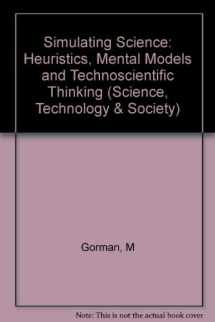
Simulating Science: Heuristics, Mental Models, and Technoscientific Thinking (SCIENCE, TECHNOLOGY, AND SOCIETY)
ISBN-13:
9780253326089
ISBN-10:
0253326087
Author:
Michael E. Gorman
Publication date:
1992
Publisher:
Indiana Univ Pr
Format:
Hardcover
292 pages
FREE US shipping
Book details
ISBN-13:
9780253326089
ISBN-10:
0253326087
Author:
Michael E. Gorman
Publication date:
1992
Publisher:
Indiana Univ Pr
Format:
Hardcover
292 pages
Summary
Simulating Science: Heuristics, Mental Models, and Technoscientific Thinking (SCIENCE, TECHNOLOGY, AND SOCIETY) (ISBN-13: 9780253326089 and ISBN-10: 0253326087), written by authors
Michael E. Gorman, was published by Indiana Univ Pr in 1992.
With an overall rating of 4.4 stars, it's a notable title among other
books. You can easily purchase or rent Simulating Science: Heuristics, Mental Models, and Technoscientific Thinking (SCIENCE, TECHNOLOGY, AND SOCIETY) (Hardcover) from BooksRun,
along with many other new and used
books
and textbooks.
And, if you're looking to sell your copy, our current buyback offer is $0.3.
Description
This study of cognitive processes and scientific research begins with an autobiographical account of a research program that was designed to simulate scientific thinking. It explores such questions as: How do mental models, representations, expectations, and presumptions affect the creation of scientific knowledge? What is the effect of confirmation or disconfirmation on the process of experimentation and the direction of research? How does a scientist decide whether a model or theory is correct? The first-person narrative allows readers to follow the research step by step and to work through the issues as the author grapples with them. The book also discusses important historical examples in which these issues have loomed large, among them the "great Devonian controversy," the etheric force controversy, and Kepler's theory of planetary motion. One fascinating chapter compares the cognitive styles of Bell and Edison and develops a cognitive framework that can be used to compare the creative processes of scientists and inventors.


We would LOVE it if you could help us and other readers by reviewing the book
Book review

Congratulations! We have received your book review.
{user}
{createdAt}
by {truncated_author}


